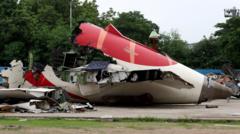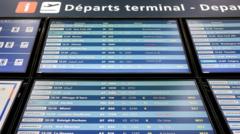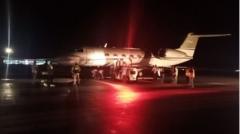London's Heathrow Airport, a critical hub for international travel, faced an unprecedented shutdown early Friday that affected approximately 120 inbound flights. As one of the busiest airports globally, operating around 1,300 flights daily, the abrupt closure sent numerous planes rushing to alternate destinations—some landing at cities like Gatwick, Birmingham, and Manchester, while others had to divert to continental Europe.
Not only were planes caught in limbo, but a significant number of passengers found themselves scrambling for hotels and alternative travel options, creating a logistical nightmare for airlines and travelers alike. Ian Petchenik, a communications director at Flightradar24, noted the complex challenge of moving "a million moving pieces," as airlines worked to reroute flights and manage the fallout from the closure.
In places like Taipei, flights to Heathrow were forced to turn back mid-journey, leaving passengers stranded. With this disruption expected to last several days, officials warned it could take considerable time to rebook the sizeable number of affected travelers.
The aviation industry has braced for impacts reminiscent of the significant disruption experienced in 2010 due to an Icelandic volcano eruption that shuttered air travel for weeks. As chaos mounts across travel networks, the need for efficient solutions remains critical in emergency situations like this one.























